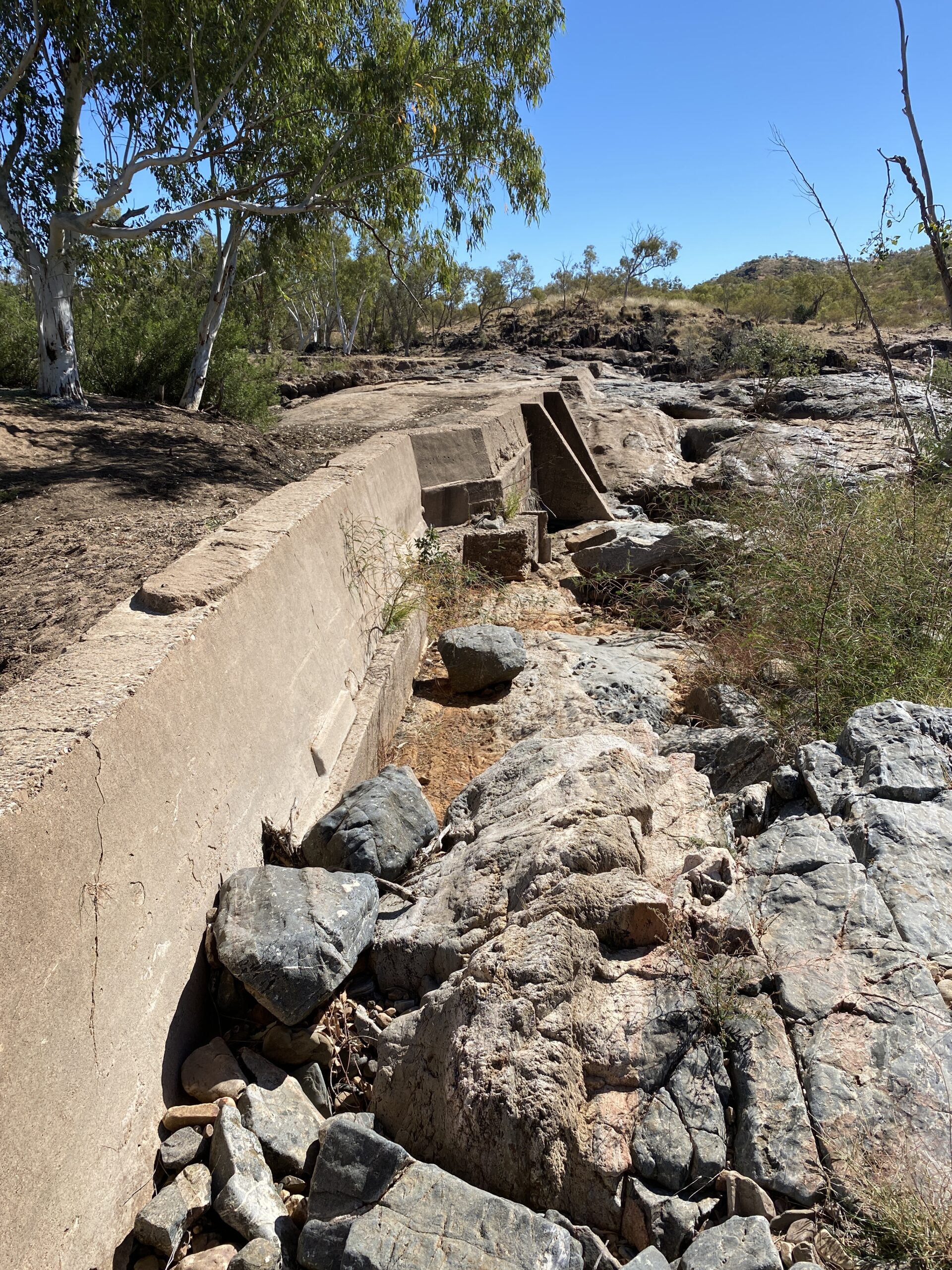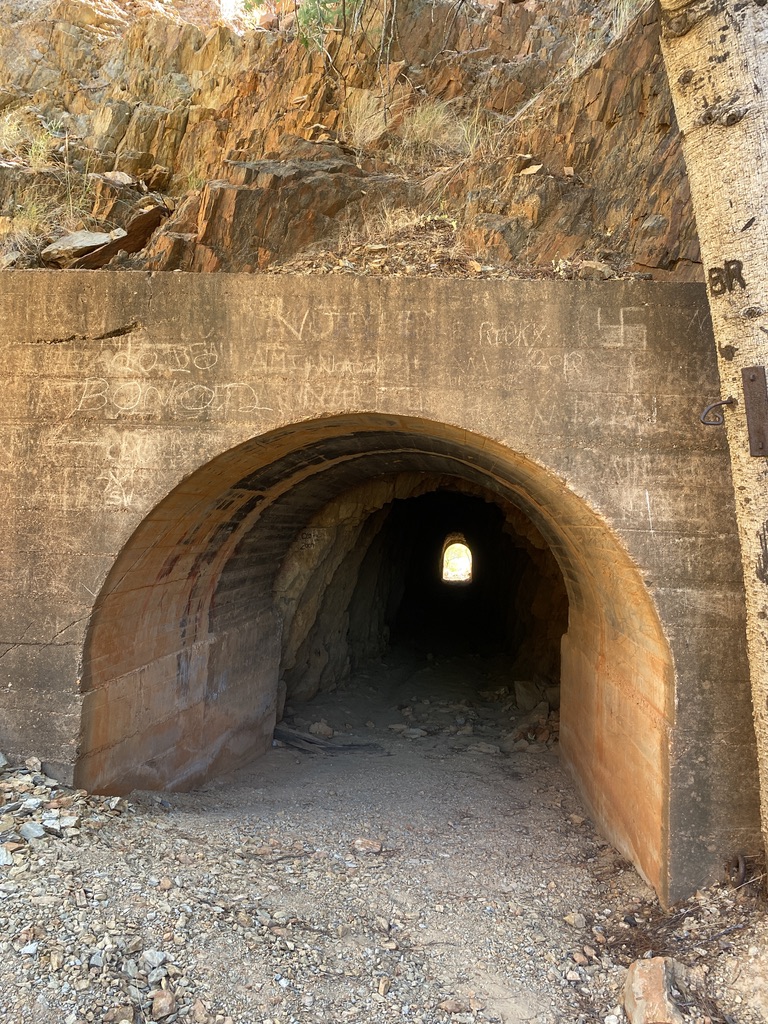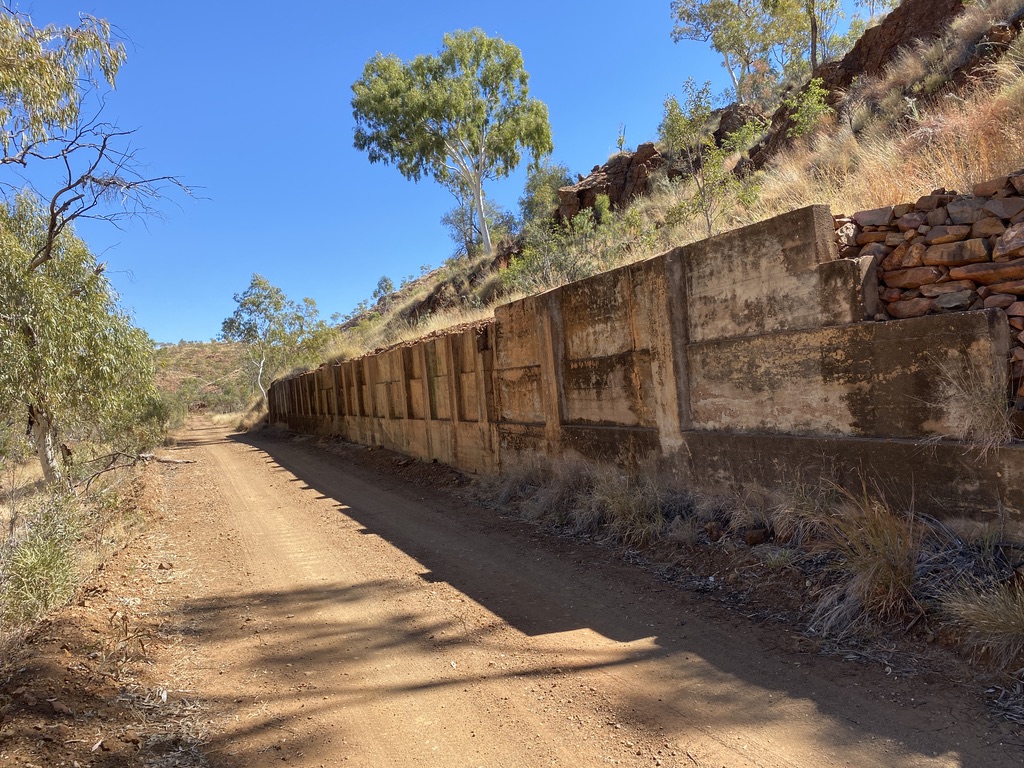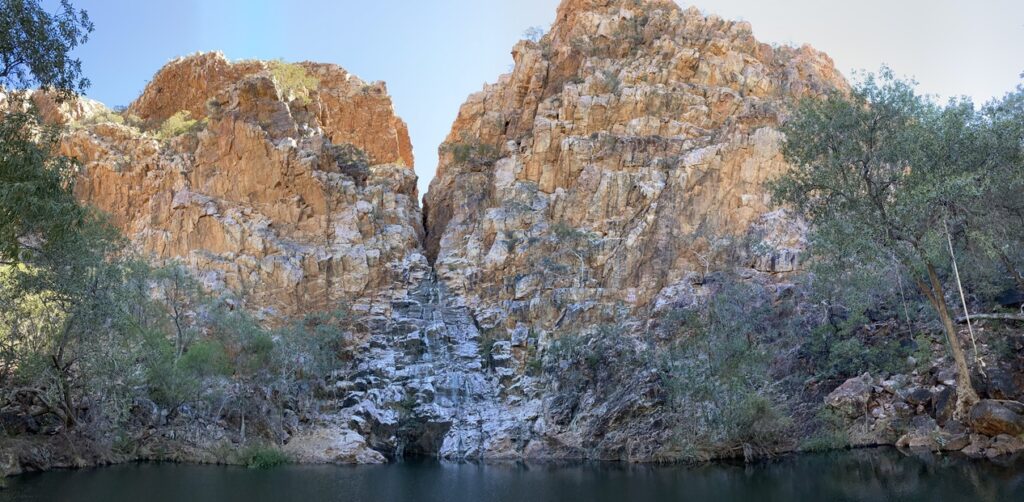I recommend a 4wd historical adventure drive located mid-way between Mt Isa and Cloncurry south of the Barkly Highway in the Argylla Ranges. You drive through Rosebud Station and a pretty good quality dirt road. The cast of Crocodile Dundee used the road during filming.
Three ghost towns sprang to life in this area just before World War I and disappeared not long after. They serviced one of remote Queensland’s most profitable but short-lived copper booms. World War I contributed to high copper prices; however, after the war, the value of copper fell below production costs. The MacGregor mining fields produced 45 per cent of Queensland’s copper production, at a time when copper exceeded earnings from gold. But the prosperity didn’t last long after copper prices plummeted.
Bulonga is the first stop on the drive, some five and a half kilometres from the highway. It shows the remains of a town and a copper smelter that operated between 1906 and 1917. The Rosebud mine started in 1905. Miners built a tunnel from the Corella River, and the ore assayed at 2.5 to 9 per cent copper. They sunk a winze[1] below the tunnel level; however, further sinking was impossible because of the water level. In December 1911, the mine owners installed machinery and a shaft sunk to a depth of over 100 feet, to prove the copper lode. Other mines in the area followed.
The Corella smelter treated ore from several mines in the area. Construction of a weir on Corella River began in 1914 to control water into the Rosebud mine during the wet season. The weir also supplied water to the town. The smelter used coking coal from the south. In November 1916, smelting operations were suspended due to a lack of water. The following April the mine was inundated due to a bad wet season. The last firing of the smelter was on 15 June 1917. On 15 November that year, the Corella Copper Company decided to close all their mines and the smelter. The smelter treated almost 24,000 tons of ore between 1915 and 1917 at a grade of 5 to 6 per cent copper. All that is left today of the smelter is a large slag heap, concrete foundations, a shaft and parts of the furnace.

Bulonga, also known as Corella and Rosebud, had a hotel, store and a bakehouse. It was also a place where Afghans kept their camels on the river. The camels carted ore to the railhead at nearby Ballara (see below) and the smelter.
Next stop is 13 kilometres further at the railway terminus called Ballara. The town was first surveyed in 1913. At its peak, Bellara had a population of over 1,000 people. Due to the uncertainty of the mineral field, the buildings were demountable, with every part numbered to a code. The hotel, boarding house and private homes were all bolted together to allow easy dismantling, transported by dray, and re-erected at another site.

The closure of the Hampden Cloncurry Copper Mines smelter at nearby Kuridala in 1920 saw the closure of mining at the Macgregor mineral fields (see below). All work ceased, and all equipment was dismantled and removed. The township then had no purpose and a large proportion of the demountable buildings were carefully removed to Cloncurry and surrounding areas. The area produced more than 44,000 tons of copper ore during a short three-year operation. The most productive mine of the field – Wee MacGregor- had two shafts with three drives of over 6,000 feet, providing ore from 3 to 18 per cent copper.
The next section of the drive for three and a half kilometres follows, for the most part, the railway into the Argylla Ranges to the former settlement of Hightville. It is a rough and slow drive as sections of the trial deviate off the line where bridges no longer exist and cross creeks. Hightville originated after the discovery of the MacGregor ore body in 1904. The Hampden Mining Company bought the original MacGregor Mining Company in 1913, and a township surveyed upon the high ridges. A hotel, blacksmith and private residences were established. Soon after, however, engineers realised that Hightville, high up in the Argylla Range, was not a suitable location for a rail terminus. A request was made for another township at an appropriate location, and a government surveyor was sent out to mark out the township of Ballara. As soon as the surveyors drove the last peg, in December 1914, the exodus to the new town of Ballara began. The company store and post office remained in Hightville.
The next stop was to drive a further kilometre up to the two-foot gauge tunnel above Hightville on a very rough 4wd track. The rail tunnel is unique in Western Queensland and represents the only example of a rail tunnel west of the Great Divide in Queensland. The tunnel is 77 metres in length and consists of an unlined rocky interior with rough finished concrete portals at each end. The tunnel was constructed manually and provided access across the rocky ridge to Wee MacGregor Mine in the next valley. It was completed in March 1915 and formed part of the narrow-gauge rail line to Ballara further to the south.

Towards the start of the drive from Ballara to Hightville, you pass an ore transfer station. Copper ore was transported by the two-foot gauge train from the Wee MacGregor Mine. It had small hopper wagons which would empty into the larger hopper wagons sited below on the 3-foot 6-inch line from Ballara to the smelters of Kurilda to the south. The two-foot gauge line carried 50 tons of ore per day in three train loads to Ballara.

The last part of the drive is nearly four kilometres to Fountain Springs, a spectacular crevice waterfall and permanent spring within the Fountain Range. A massive gash in the range is where a waterfall starts. The spring is a geological fault line where the water table comes on the surface providing year-round water in a shaded cool area. Because we visited during the dry season, the falls were not flowing.

[1] A winze is a connection between different levels in a mine
